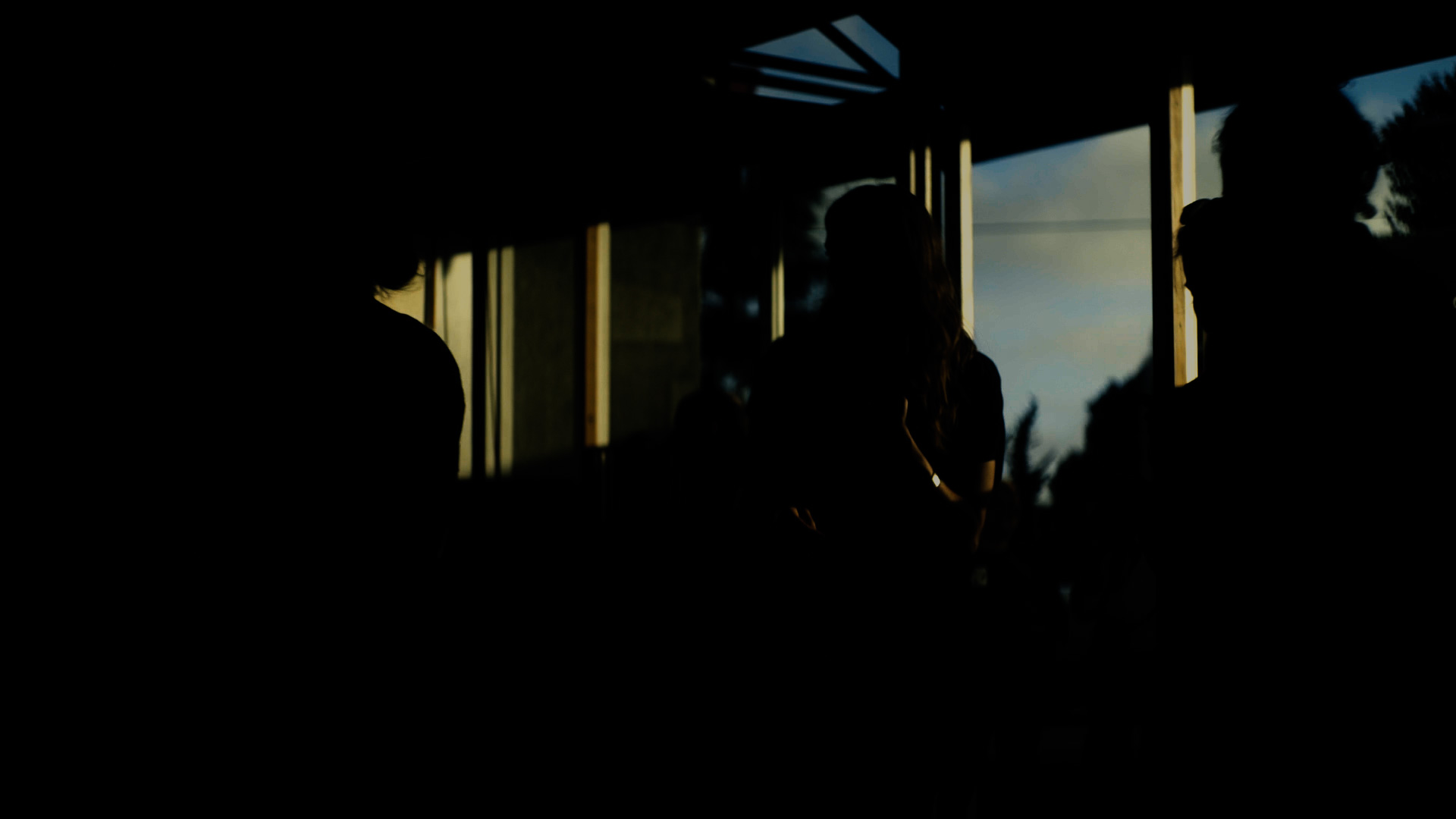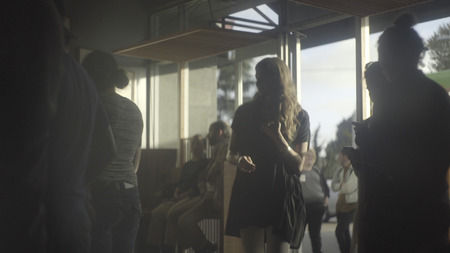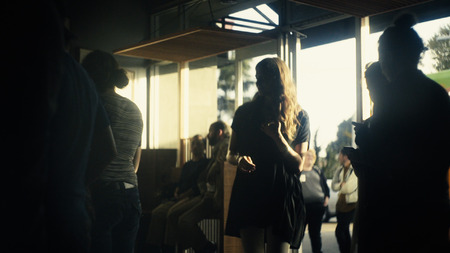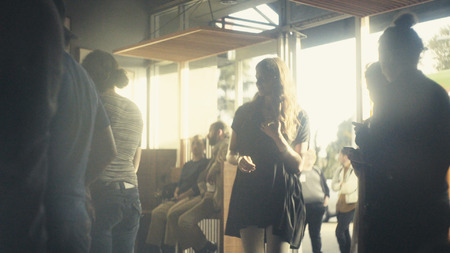Sony a7S Days 1 & 2
 Friday, July 4, 2014 at 1:16AM
Friday, July 4, 2014 at 1:16AM I’ve had the Sony a7S for two days now. I’m doing everything wrong, and loving it.
If your life is boring, just order a new camera. The day it arrives, I guarantee you’ll have tons of other, non-camera-related stuff going on. My Sony a7S arrived into a blender of familial and professional activity. The only option I saw was to go full DV Rebel and bring the little beast with me wherever I went, in the hopes of stealing a shot or two.
Right away, I was doing everything wrong. I assumed my U3 card I’d bought for my short stint with the GH4 would work in the Sony, but the a7S specifically requires a SDXC card to record the highest data rate format, XAVC-S (50 Mbps). I had purchased the 32GB of this model, which is SDHC. The 64GH version is SDXC. Obviously.
Stuck recording only 24Mbps AVCHD, I proceeded to search my kit for my vari-ND filters, which I seem to have misplaced. Wow. Should I be telling you all this?
Luckily, both my Metabones Mark IV and FotodioX Vizelex ND Throttle EF to NEX/alpha adapters had arrived. The Metabones is expensive at $399, but necessary to control electronic EF lenses (and exceptionally well-made, down to the plastic carying case). The Vizelex adds the convenience of 10 stops of variable ND, but can’t communicate with, or even power, a lens. But if you have manual EF-mount glass, the Vizelex is easily worth the $99.95.
None More ND
Because, of course, the elephant in the blown-out room is that the a7S only goes down to ISO 3200 when shooting S-Log2, which is the Picture Profile where this camera’s unique abilities truly shine. Good for about three extra stops of highlight handling and aching to be graded, S-Log2, even at 8-bit, is half of this camera’s claim to my heart.
The other half is, of course, the full-frame sensor. You get a terrifyingly good look at it every time you change lenses. At only 12 megapixels for stills, its photosites are like giant buckets collecting excesses of light from even the darkest corners.
So why must S-Log2 bottom out at ISO 3200? Pre-production models actually went down to 1600. Why the change? Word is that it was to max out the dynamic range, and I certainly hope that’s the case—but this gotcha will make you think twice about trying to shoot S-Log2 in bright daylight.
Unless you’re doing everything wrong, like me. I slapped 2 ND8s on the front of my Schidt Optiks FF58 (which took every adapter ring I own), which, in turn, I mounted to the Vizelex. This allowed me to expose properly in daylight, at the modest expense of introducing an unpredictable green-to-purple tint to the image.
Not that you’d ever know while shooting. Capturing S-Log2 without any kind of viewing LUT falls somewhere between crazy and stupid. The best possible reason to attach an EVF or outboard monitor to this camera would be to enable a viewing LUT. Without this, it’s hard to see any color at all in the image. It’s also far too easy to grossly underexpose skin, because shadows that should really be nearly black under a proper S-curve LUT appear as bright, detailed gray. Brightening 8-bit S-Log2 in post is possible, but this ISO 3200 footage is indeed noisy, and while the noise is not unpleasant to the eye, it becomes so when you push to too hard.
The a7S cannot shoot 4K internally, which has many folks excited about the not-yet-available Atomos Shogun 4K monitor/recorder. Even if you never recorded 4K with it, its LUT capabilities would be of enormous value when shooting S-log 2.
I was so fascinated with the challenges of using this camera in bright light that I neglected to test its seemingly unrivaled low-light performance. See: Doing everything wrong.
The Pictures
The video above is a mess. I shot it mostly with food and drink in the other hand. It cut it quick, and I tried not to be too precious about color (although I couldn’t resist tracking a few masks), working entirely in Premiere Pro. I graded under a modified Kodak 2383 LUT in Magic Bullet Looks 2.5, using the new LUT Tool, as well as some top-secret stuff I’m working on(!). The combination of 8-bit, S-Log2, and AVCHD compression should result in scrambled eggs.
Instead, to me, it’s just magic.
Here’s a shot from the sunny bar where I surreptitiously shot the cocktail-making:
Here it is with the LUT and some color:
Boost the virtual exposure and detail appears in the shadows (aglow from the low-contrast, flare-crazy Schidt lens):
Drop the exposure and you can see clouds in the blue sky outside.

After years of suffering with the razor’s edge exposure window of the 5D, this is simply glorious.
Random Observations
I could write all day and never cover even the most basic information about this camera, so instead, here are some context-free tidbits:
- There are optional video frame guides, including one for 2.35:1 framing. I immediately assigned one of the function buttons to toggle this on and off.
- Red Giant’s Denoiser II works wonders on the S-Log2 footage. The default settings are perfect—just make sure you’re working in a 16bpc project in After Effects.
- The a7S comes with two batteries, and the wall-wart charger has three indicator lights showing the charge level. That was something that bugged me about the GH4—its charger simply lights up yes or no, giving no hint at how far along you are.
- Also included is a simple, plastic “cable protector” to keep delicate HDMI cables from getting yanked out or bent.
What’s Not to Like?
It’s painfully ironic that the low-light king of cameras has a noise problem when shooting video in broad daylight. Shooting S-Log2 without a viewing LUT is challenging, but shooting in other picture profiles reduces dynamic range enough that a big part of this camera’s appeal disappears. The alpha body is solidly-built, but it’s so maniacally small that it’s difficult to grip, especially with a big lens attached.
The small, awkward package makes for unstable hand-holding, which immeditaly reveals the camera’s pronounced rolling shutter. But in actual shooting (instead of crazy camera waving), it’s not a big deal as your first impression causes you to fear. In this video, I applied the excellent Rolling Shutter Repair effect included with Premiere Pro and After Effects to a handful of shots. It’s not a panacea, but it works shockingly well, and renders fast.
But C’mon
This camera rocks. It’s already aced my litmus test that the GH4 failed—it makes me excited to go out and shoot. I’m eager to see what happens when I start doing just a few things right.
The Sony a7S is shipping now from both Amazon and B&H. You’ll need an SDXC card. The Atomos Shogun is available for pre-order.












Reader Comments (20)
Glad to see you so happy with it, though it will make my wait even harder (my a7s won't reach my hands till mid-august).
I know you'll need your mandatory subway short, so here it is:
http://vimeo.com/99854427
Also, regarding the rolling shutter isue: I measured it at a very slow 30.5ms, nearly as bad as the D90, but it is much faster in APS-C mode (19.5ms, slightly faster than the 5D3). And since you are unlikely to see the issues of the APS-C crop mode (less detail, aliasing, moire) on a fast-moving shot, basically the a7s becomes its own fast-RS B-cam.
You are sooooo much better at grading an image than I am; I love this post because it's great to hear your thoughts. I like what you said about not having to nail the exposure like you do with the 5D3 all the time when shooting in slog2 on the Sony.
So my big question is, will the Sony become your new personal A-camera for both stills and video? Will the 5D3 be put in the closet and be lost, lonely and forgotten?
I found S-Log2 to be almost too flat. Saturation was tough to bring back in some shots even at 100% I need to start using a LUT with Colorista II. The body is hard to handhold and the record button on the side is really bugging me, but yes something special about the full frame image coming form the A7s. Definitely a fun camera.
LOL What was that line about literally SEVERAL things in focus? :-)
One thing that does confuse me. With the slog being soooo flat, and presumably only 8 bit, how are there enough bits to go around? Why isn't it banding like crazy the moment you slap an aggressive look on it? It's great... but I'd like to understand how it is doing it!
Noise is the anti-banding, and this camera has it.
Just joined to share this in case it works...
I found that I could use any SD card I want with an AX100 to record in xavc as long as it's formatted in exfat instead of fat32, which the camera defaults to for any card under 64gb. Try formatting your cards on a Windows machine. I was able to use some regular class 10 micro sdhc cards that way.
Hope it helps. ;-)
By the way, could you please test the autofocus?
I'd like to know how useful this camera would be on a gimbal.
Thanks.
Great review, especially the part about the problems. You are making me salivate for a new camera.
The specs on the Amazon page says it does 120fps. Is it safe to assume that that can't happen without the external recorder, even if doing it at 2K 1080p and not 4K?
120 fps is internal, but only at 720p, and with a sensor crop.
Thanks Stu.
hmm....I wonder if it's potentially ML hackable or a hardware limitation.
How about a touchy feely A7s daytime test in bright sunlight in Malibu instead of hedonistic cocktail/noodle slurping in the shadows? (great write-up & shooting btw)
Shot this all wrong in Vibrant cause I couldn't see crap in s-log in blinding light with my prescription sunglasses not forming a tight seal on viewfinder. Zebras saved the day.
https://www.youtube.com/watch?v=scqcjs9vf-8
Your negative words on the GH4 made me like it more, and your positive words on the A7s made me like it less. Though I still prefer the A7s for my needs. I wasn't aware that it's a noisy camera at its base iso. Very strange. So it has worse rolling shutter than the GH4 but better dynamic range, low light sensitivity, and noise?
I've also been wondering about the APS-C crop mode, which is supposed to work in both 1080 and 4K. How does it look? At 4K I imagine not so good, as it'll be upscaling the resolution, yes? Any idea what the crop factor is for the 720p 120fps?
Seems like the best way to think of this camera is as an improved 5D mk III... smaller, lighter, cheaper, 4K, higher dynamic range, an APS-C crop mode, easily adapted to other lenses, even better low light sensitivity, and a heartier format for color correction. The 5D only wins at Raw (via the ML hack) and of course still photography.
I'm really blown away with mine. Using the Zeiss lens package with the APS-C sized crop. There seems to be a very noticeable reduction in rolling shutter when you switch from the full sized sensor, and the image is still very pleasing.
Shooting in Slog in XAVC gives you a lot of meat on the bones to take into color correction.
When I purchased the camera, I bought the Atomos Ninja Star - intending to use it as an external recorder - but have yet to get the CFast cards for the Star. Have not felt the image compromised by recording in XAVC at all, and PPro cuts it like hot butter.
GFB
The Vizelex that you used with the purple and green tint...I am seriously considering buying that adapter but the tint issue scares me. Is it easy to take out in post? Like on skin tones and such?
How did you get the anamorphic bokeh - did you shoot and capture anamorphic?
That's the Schidt lens. I ordered mine with an oval aperture.
Stu,
Did you order your Schidt lens with a tint, or is that golden look done in post? Can you remember your specs for the lens?
The gold tint is done in post. I ordered my lens with a blue flare tint, low contrast, and heavy scratches. Because why not?
Yeah, think I'm gonna go with the 'Stupidly Low Contrast' option, excited to see how that combines with the s-log DR-wise. Thanks Stu